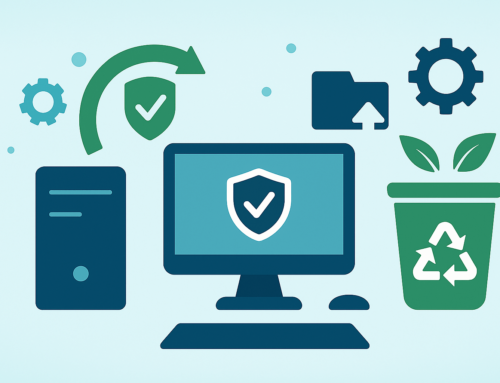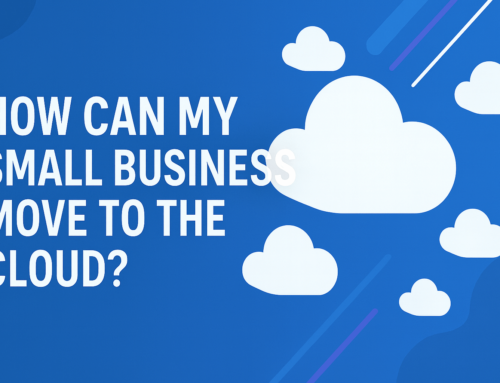Onsite IT vs Remote IT Support: Choosing the Best Option for Your Business
In today’s digital landscape, businesses heavily rely on information technology (IT) to streamline their operations and maintain a competitive edge. When setting up an IT department, one crucial decision to make is whether to opt for onsite IT support or remote IT support. Each option comes with its own set of advantages and disadvantages, and selecting the right one for your business requires careful consideration. In this article, we will explore the key factors to consider and weigh the pros and cons of onsite IT and remote IT support to help you make an informed decision.

Infrastructure Location:
The location of your IT infrastructure is a significant factor in determining whether onsite or remote IT support is suitable for your business. With the rise of cloud computing, many businesses have shifted their IT infrastructure to the cloud, minimising the need for extensive on-premises hardware. Software, servers, and business applications are hosted in the cloud, offering benefits such as reduced maintenance tasks, better internet connectivity, and guaranteed uptime.
Audience:
Understanding the primary audience of your IT support services is crucial in determining whether onsite or remote support is more suitable. If your IT team primarily supports internal employees, they may encounter hardware-related issues that require physical access to the devices. In such cases, having at least one onsite IT staff member who can address local hardware-specific problems is beneficial.
On the other hand, if your IT support primarily serves external users or customers, remote support may be sufficient. With the right tools and access, most user-related issues can be resolved remotely. In this scenario, a fully remote IT team can provide efficient support without the need for a physical presence.
Custom Development:
IT encompasses more than just managing hardware and accounts. Depending on your business requirements, you may need custom development, specialised IT security, or compliance auditing. If your environment necessitates ongoing development or close collaboration among team members, an onsite IT team may be more suitable. In-person interactions can facilitate faster response times and seamless communication.
However, remote teams can also handle development tasks effectively. Many successful companies operate with entirely remote development teams, leveraging communication and collaboration tools to maintain productivity. While remote work comes with unique challenges, such as building camaraderie and managing technology disparities, it can be a cost-effective solution for businesses that require custom development without the need for a physical presence.
Pros and Cons of Onsite IT Support:
Onsite IT support offers several advantages. Employees are less likely to have an adversarial relationship with the support team compared to remote support. The proximity of onsite staff enables them to handle local hardware-specific issues more efficiently by physically examining the affected devices. Onsite IT staff can provide a more strategic view by overseeing hardware and software usage, and offering recommendations for replacements or upgrades.
However, onsite IT support has its drawbacks. It limits your hiring pool to local talent, potentially leading to higher costs and a smaller workforce. Setting up a full workshop environment for an onsite team, including servers, infrastructure, tools, and office space, can be more expensive compared to hiring remote staff.
Pros and Cons of Remote IT Support:
Remote IT support offers several benefits. One major advantage is the cost savings associated with not requiring dedicated office space for the IT team. Remote work allows for a broader talent pool, enabling businesses to find skilled professionals at a lower overall cost. Remote workers can also provide around-the-clock support more easily, especially when partnering with a managed service provider (MSP) that offers 24/7 availability.
Moreover, remote workers often have higher morale, lower stress levels, and lower absenteeism. The flexibility of remote work positively impacts employee satisfaction. By embracing remote IT support, businesses can leverage these benefits and reduce their operational costs.
However, remote IT support may be viewed as a roadblock or adversary by some employees, similar to the perception of call centres. Cultural and language barriers can also arise when hiring remote staff from different locations.
Summary
In most cases, a remote IT workforce can effectively support businesses. Whether you choose to work with an MSP, freelancers, or remote employees, you have the flexibility to customise your IT support based on your specific needs. It is worth considering a hybrid solution that combines onsite and remote IT support, as this can provide the best of both worlds.
Ultimately, the decision between onsite and remote IT support depends on factors such as your infrastructure setup, the primary audience of your IT services, and the need for custom development. Analysing your specific circumstances and consulting with IT experts can help you determine the most suitable solution for your business.
At Techfident, we offer comprehensive IT support services tailored to your organisation’s needs. Whether you require onsite assistance or remote support, our team of experienced professionals can provide the right solution for your IT requirements. Contact us today to learn more about our services and how we can help your business thrive in the digital landscape.




